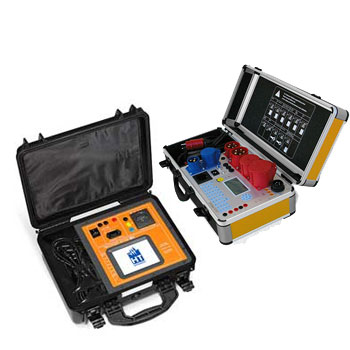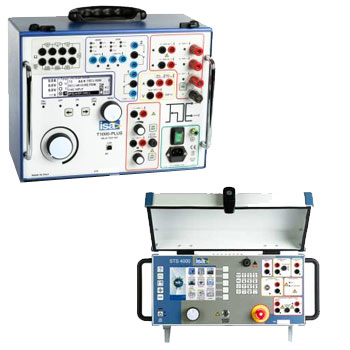
Thermal Imaging Cameras – fast, contactless temperature analysis for service, QA & research
Thermal imaging cameras (thermography) visualize temperature distributions as a thermal image—ideal for maintenance/facilities, electrical panels, process/production, buildings/energy, R&D/labs and HACCP/quality.
Depending on the model: LWIR/MWIR, radiometric capture (°C per pixel), resolution up to VGA/megapixel, NETD (thermal sensitivity) down to <40 mK, interchangeable lenses (wide/standard/tele/macro), auto/manual focus, image fusion, video/streaming, analog/digital I/O, apps/PC software and reporting.
ICS Schneider Messtechnik assists with camera/lens selection, emissivity strategy, calibration and integration into QA/IIoT workflows.
FAQ on Thermal Imaging Cameras
Answers on radiometry, resolution/NETD, optics, emissivity, accuracy, focus, software, documentation and field use.
What does “radiometric” mean?
Radiometric cameras store a temperature value per pixel (not just an image). This enables precise point/area measurements, alarms and later analysis.
Which spectral bands are used?
| Band | Wavelength | Typical use |
|---|---|---|
| LWIR | ~8–14 µm | Buildings, electrical, mechanics, general process |
| MWIR | ~3–5 µm | High-temperature processes, glass/flames |
| NIR/SWIR | <2 µm | Special inspections, materials |
Resolution vs. NETD—which matters more?
Resolution defines detail (e.g., 320×240, 640×480). NETD (mK) indicates how fine temperature contrasts are detectable. For subtle gradients, a low NETD is critical.
What is IFOV and why does it matter?
IFOV (Instantaneous Field of View) is the pixel size on target. It determines whether small hotspots are resolved—driven by sensor pitch and lens.
How do I choose the right lens?
| Lens | Characteristic | Use case |
|---|---|---|
| Wide-angle | large field of view | Building envelope, close range |
| Standard | all-rounder | Service/electrical |
| Telephoto | narrow field of view | Safe distance, small targets |
| Macro | very short distance | Components/PCBs |
How accurate are thermal cameras?
Typically ±2 K or ±2% of reading (model-dependent). Emissivity, reflections, distance, focus and environment influence practical accuracy.
Emissivity (ε)—how do I set it correctly?
Material-dependent (0.05–0.98). For bare metals, create a matte reference (tape/paint), then adjust ε until readings match a contact reference.
Radiometry vs. visual image fusion?
Image fusion (e.g., MSX/blend) improves edges/readability but does not change temperature data. Use radiometric data for analysis.
Autofocus or manual focus?
Autofocus is fast and repeatable; manual offers maximum control for macro/tele. Defocus produces measurement errors.
Can I record/stream video?
Many models support radiometric video (RAW/CSV) or streaming (USB/RTSP). For fast processes, check frame rate.
What temperature ranges are typical?
Depending on the camera, −20…+1500 °C (in ranges). For very high temperatures, consider filters or MWIR systems.
How do I calibrate/verify a camera?
Use a blackbody in the relevant range with defined emissivity, distance and a stability criterion. Document for traceability.
Which color palettes should I use?
Iron/Rainbow for quick search, grayscale for analysis, high-contrast for small ΔT. Consistent palettes improve comparability.
Buildings & HVAC—special tips?
Ensure indoor/outdoor ΔT ≥ 10 K, avoid drafts, consider dew point, and exclude mirror-like surfaces from evaluation.
Electrical panels—what matters?
Document load (A/kW), compare like-for-like components, avoid reflections (face shield), and define thresholds/classes.
Process/production—practical advice?
Keep geometry/distance constant, use IR-transmissive windows, set software triggers/alarms, and run regular reference checks.
What software features are useful?
- Points/lines/areas, isotherms, ΔT
- Batch reports (PDF/CSV), templates
- Emissivity/reflection correction
- API/SDK for SCADA/IIoT
Maintenance & lens care
Clean lenses with a lint-free cloth, use protective caps, avoid shocks/vibration, and keep firmware up to date.
Safety aspects
Keep distance to hot/energized parts, wear PPE, and avoid imaging mirror-like glass surfaces head-on (reflection risk).
Do you provide support & calibration certificates?
Yes. We help with camera/lens selection, issue ISO/DAkkS certificates, set up workflows and integrate with QA/IIoT.
















































































































































































